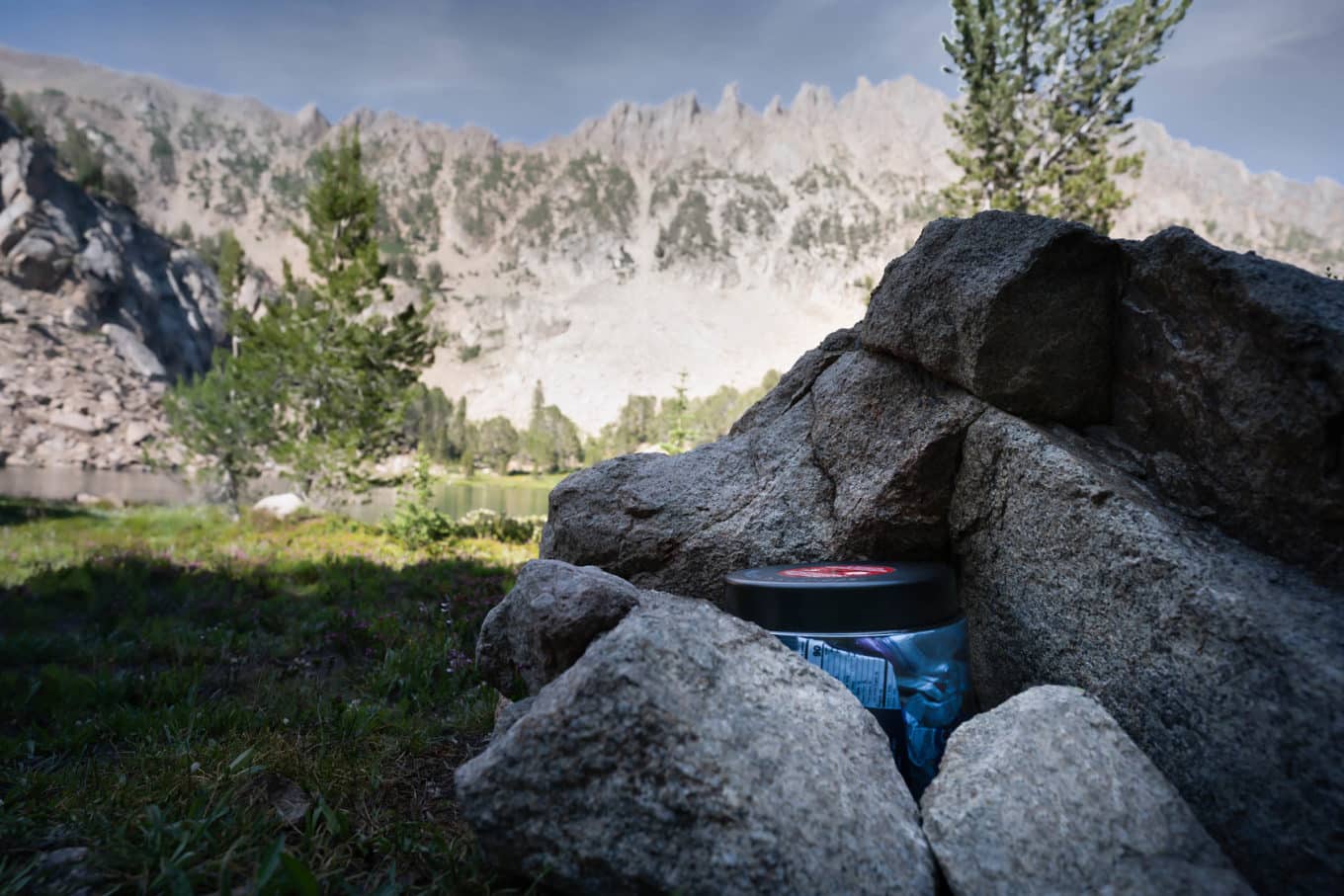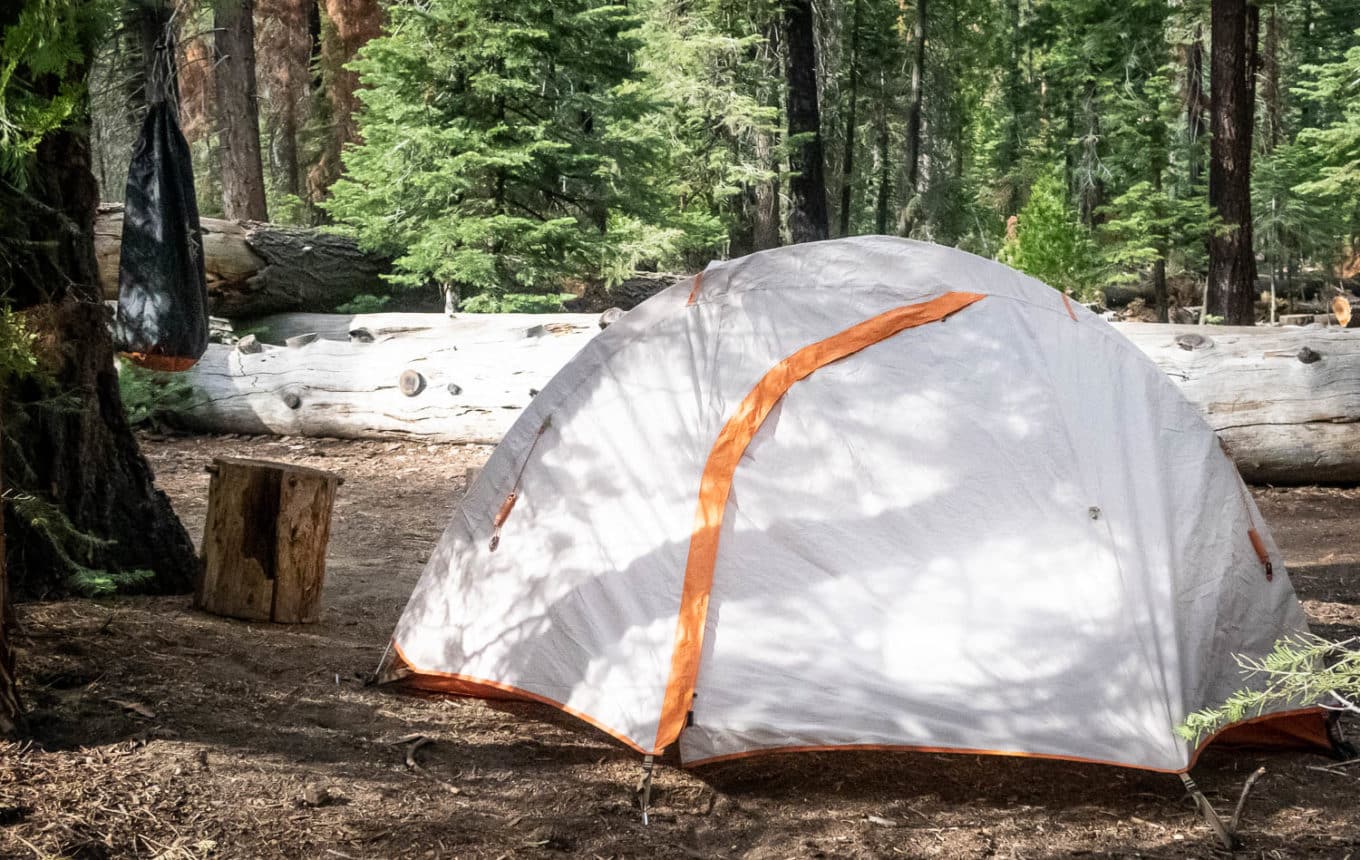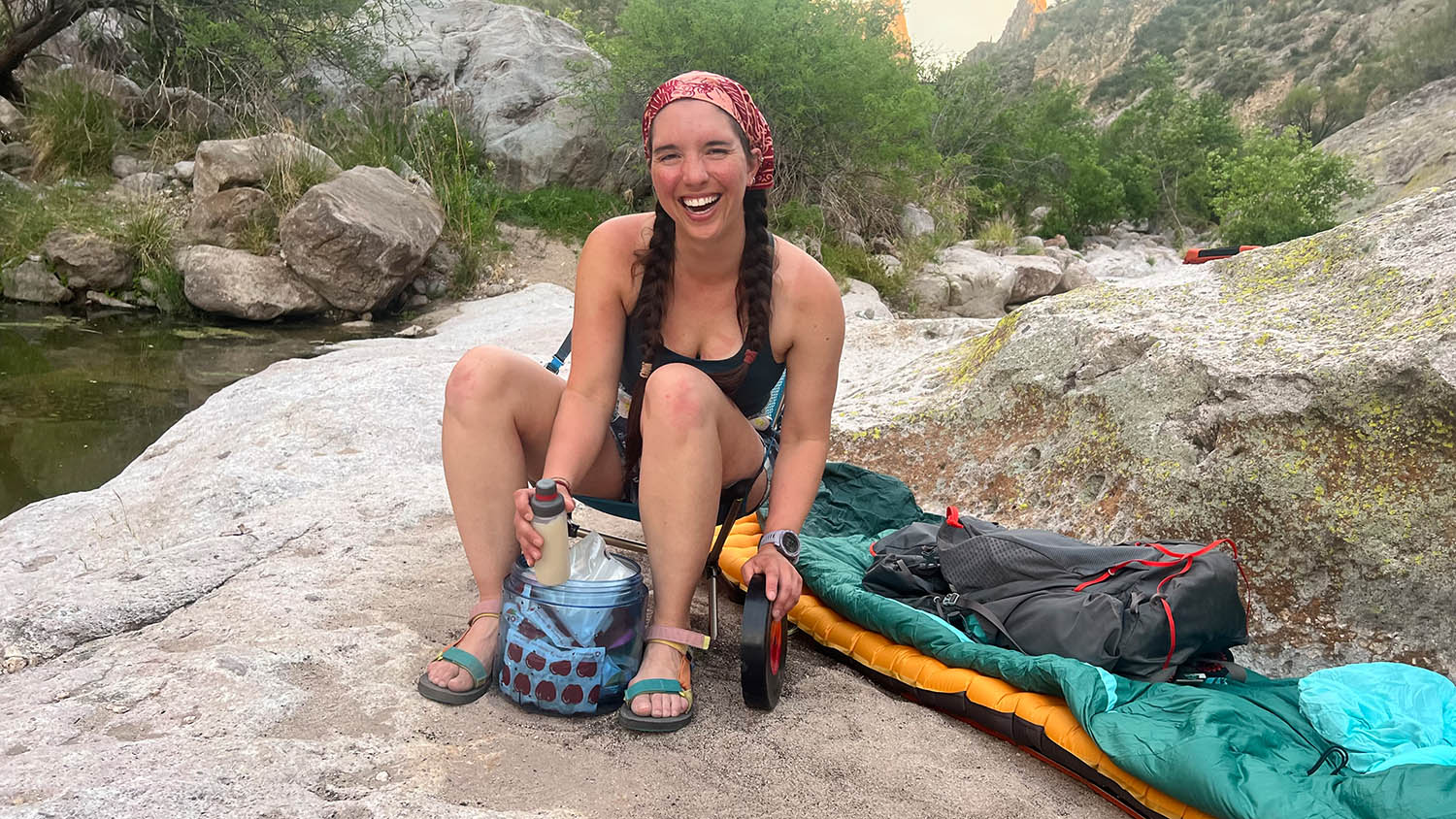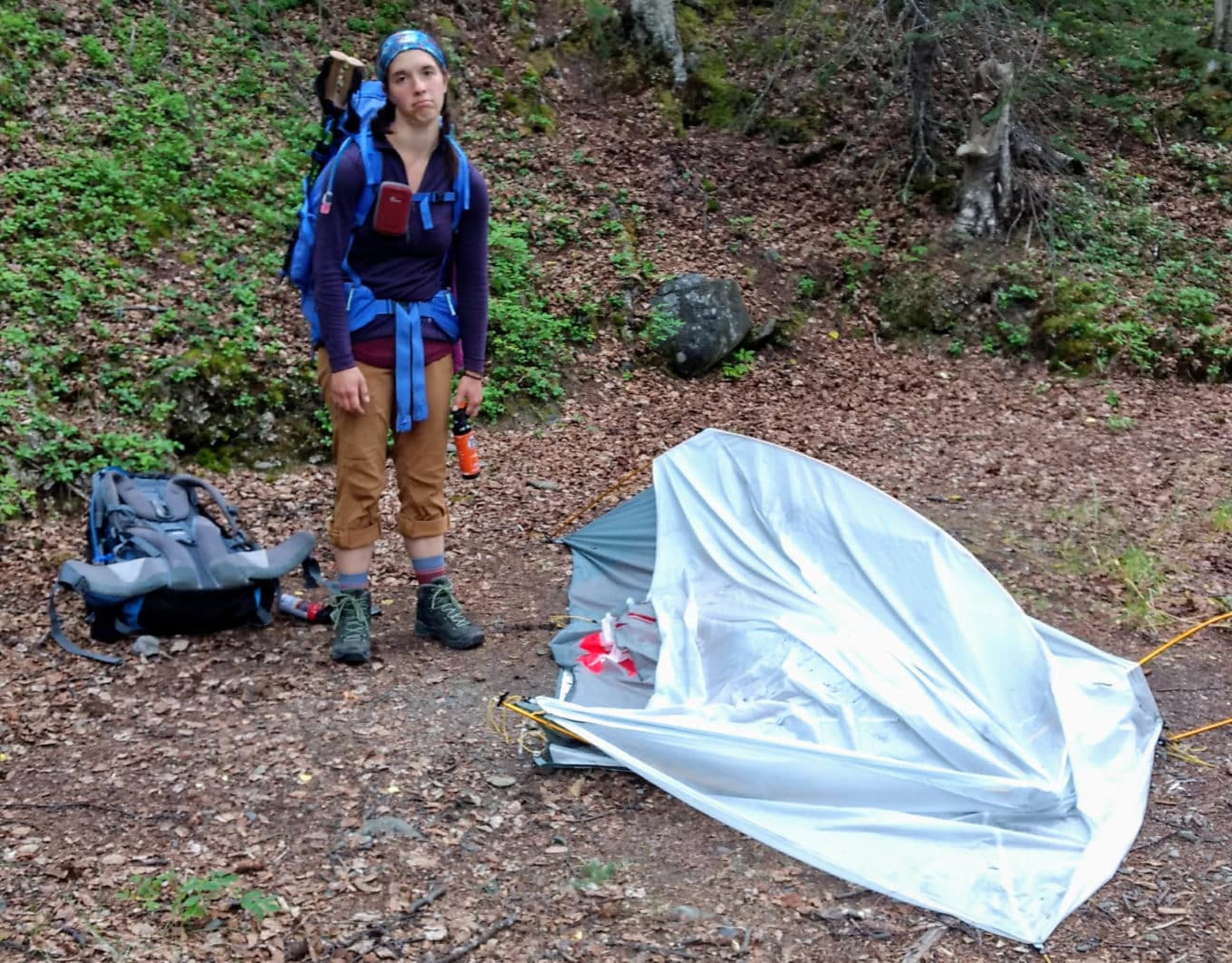
Do You Really Need a Bear Canister?
- Miranda Webster

On my first ever backpacking trip, I saw two black bears. They were wandering across the trail as I approached camp, and I confidently (though naively) instructed my backpacking buddy on best practices for dealing with a bear encounter, regurgitating information I’d read the night before. After dinner, I gathered my snacks and food that I’d strewn about camp, tossed everything into a stuff sack, and wandered a few feet from camp to take care of the bear hang. It was a concept I only vaguely understood – hang food to keep away from bears, how complicated could it be? – so I looped the stuff sack over a low hanging branch and watched it slump to hang mere inches off the ground. It was hanging at a level that I now affectionately refer to as “bear-punching-bag territory,” and it definitely didn’t pass any of the requirements of a proper bear hang. At that moment, I realized I’d spent so much time thinking about what to eat, where to cook, and how to clean my dishes – and never once had I thought about food storage.

I’d love to say that was the first and last time that I lamely tossed an old stuff sack over a branch and called it a “bear hang,” but the reality is that I executed dozens of mediocre bear hangs and had several packs chewed through and snacks lost before I finally examined my food storage practices. I started by attempting to perfect my bear bag hanging skills, but after several tree-less camp spots and panicky moments where the paracord was too short or the tree too tall, I realized I needed a better solution.

I was introduced to the bear canister on a backpacking trip in the Pacific Northwest. On this particular hike, bear canisters were required – and the group of women that I hiked with were courteous enough to let me borrow a BearVault. I fell in love with the ease and the security of chucking everything into the container and walking it away from camp, and I loved that I could use it as a seat at camp. It only took that one trip before I was convinced to invest in my own. Something that had seemed so unnecessary and cumbersome to me quickly became a constant companion on all of my trips. If I hadn’t borrowed one, I likely would have held out even longer – so here are a few things that led me to choosing a bear canister, and why I think you should get one, too.
For starters, proper food storage in the backcountry or at any camp is your responsibility. If an animal gets to your food stash, it’s not only a massive bummer: it’s also a legal nightmare, a moral issue, and yes, a problem of safety. Improper food storage can actually be punishable by impoundment of vehicles or equipment, permit revocation, and hefty fines of up to $5000. If that doesn’t get you nervous, just think of all the germs our forest friends bring along. Squirrels, racoons, and varmints carry a multitude of diseases – so even a small hole in a bag of instant noodles generally means the whole thing is trash. As backpackers, we know that every bit of food we bring is important, so a meal lost to an animal can instantaneously bring a trip to an end!

While the exact specifications of food storage can vary from park to park, bear canisters are the most widely accepted form of food storage, and a huge risk-mitigator. Remember that improperly stored food is not only a risk to you, but also to the animals. My closest run-in with a bear happened in Alaska: a run-in that resulted in my friend and I having our tent destroyed at a popular campground despite the fact that no food or other smellables were stored anywhere close to the tent. We spoke with a ranger after this encounter, and they speculated that it likely happened because the bears were accustomed to tents signifying humans, and humans signifying food. It didn’t matter that we didn’t have food in our tent – it was the possibility that led the bears to search our tent, and it was definitely a deep stroke of luck that we weren’t inside. In a situation where bears start to recognize and become accustomed to the resource of human food, they become a risk to humans and often need to be killed. That’s right – improper food storage is functionally bear murder.
While hanging food was a widely accepted method for decades, the introduction of bear canisters has made hanging obsolete at best and, in some parks, illegal.
-Miranda Webster
If you’re like me, you’ve likely done your fair share of embarrassingly bad food hangs and realized that it’s not the best system; and this is where a bear canister comes in. While hanging food was a widely accepted method for decades, the introduction of bear canisters has made hanging obsolete at best and, in some parks, illegal. Hanging food just isn’t a viable option in places where you can’t get that perfect tree – and bears and other animals in some heavily trafficked parks have wised up and learned to take down hangs. No matter how good you may be at the perfect bear hang, it still can’t beat the bear can.
My love for this ease and security has far outweighed any hang-ups I had around the weight or size of a bear can. I carry my canister any time I’ll be out in bear country, and it’s basically a safety blanket for me. Gone are the days of fervently searching for perfect trees, tying knots in paracord that I’ll never be able to get out, or hoping someone will spare some room for my leftover chili mac in their own food storage system. Proper food storage is a crucial part of being a good steward to the outdoors, and I’d argue that a bear canister is as crucial to my backpacking kit as my stove, my sleep system, and my first aid kit: it’s just not something I hit the trail without.
I’d argue that a bear canister is as crucial to my backpacking kit as my stove, my sleep system, and my first aid kit: it’s just not something I hit the trail without.
-Miranda Webster
So do you need a bear canister? For me, having a bear canister has made it easier for me to say yes to solo trips, spontaneous overnights, and adventures in areas that require more thought on food storage. If you aren’t sure, I’d highly recommend borrowing, renting, or just testing one out first – and I’d bet you’ll fall in love with it, too.

Guest Author:
Miranda Webster
Backpacker, climber, and self identified avocado lover, Miranda Webster has traveled the United States and beyond in search of the best outdoors. Perhaps best known for her REI video series “Miranda in the Wild” she is respected as an expert on all things outdoors!


